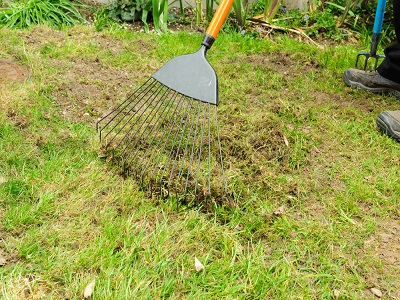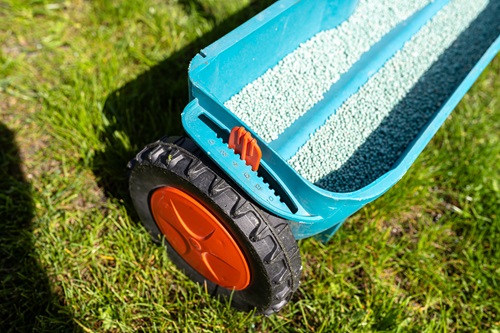
Cool fall weather is a great time to fertilize, control and enhance the appearance and health of your yard. You can make your yard lush and green when the temperatures rise again in spring by doing a little bit of work now. Here are some lawn care tips you need to know.
Lawn Care Tips You Need To Know Today
ADJUST YOUR MOWING HEIGHT
If you have raised the height of your lawn mower last summer to lessen heat stress to the lawn, then return it to its original mowing height (about 3 inches for most grasses). To prevent your grass from matting down under snow and leaves, cut your lawn slightly shorter in autumn. However, it is important not to cut the grass too short. A tightly cut turf will have fewer roots, which makes it easier for weeds to grow.
MAKE SURE TO GIVE YOUR GRASS PLENTY OF WATER
You might want to water your turf more often in autumn if you experience a drought during the summer. The lawn will transition into winter by getting a few deep soaks and moistening the soil for several inches before it freezes. The fall weather patterns will often change, and nature will supply the moisture. Watering in the morning is a good idea to limit evaporation, when necessary.
FERTILIZER
If you are in the North, fall is the best time for fertilizing your lawn. Bluegrass, fescue, and ryegrass are cool-season grasses and respond well to fertilization in September. Do the second feeding in late October or November. This helps them grow faster and looks better in spring.
Don’t fertilize dormant warm-season grasses in the south. Only do if they’ve been overseeded with winter ryegrass.
ATTACK WEEDS
The best way to control weeds is to create a lush, healthy lawn. Make sure to mow at the correct height and add fertilizer if necessary. If your lawn is in good shape, smaller weeds will be shaded. You can pull out larger weeds by using your weeding tool. Follow all label instructions and only use the weed killer to target the weeds that you are looking to eliminate.
REPAIR DEAD PATCHES
Early fall is a great time to reseed thin or dead patches in cool-season lawns. You’ll have fewer weeds to deal with next year if you seed in autumn. The seedlings will be established before the arrival of hot, stressful weather. Mulch products that are embedded with fertilizer and seed are an easy way to fill in the gaps. Make sure you prepare the soil with a rake prior to seeding. Water new seeds frequently for at least two weeks after application to encourage rapid germination.
LAY SOD
Fall is the best time to patch turf with sod. Moderate temperatures and plenty of moisture could get the sod off to a good start. High-quality sod is dense, thick, and free of weeds. This is a quick and easy way to fix bare spots. You can water the new sod every day if conditions become dry.
LOOK FOR THATCH
Thatch is a layer of dead organic matter that forms near the soil surface. It can cause insect and disease problems, as well as damage from drought or cold weather. Overwatering your lawn too often or overfeeding it can cause thatch. You can check if you have this problem by using a spade to turn a small area of turf. Call a lawn care expert if you need help.
GET RID OF EXCESS THATCH
Dethatching is the process of removing the thatch layer from the soil and removing any debris. This can be done with power rakes and vertical mowers, which can be rented at rental agencies and hardware stores.
AERATE
Aeration can also be used to reduce thatch, improve drainage, and loosen the soil. The most popular type of aerator is the core aerator.
ADD A TOPDRESSING
Topdressing is the process of adding a thin layer of compost or soil to your turf. Topdressing improves the growing conditions by decreasing thatch and increasing organic matter in the soil.
GET RID OF FALLEN LEAVES
You can get rid of fallen leaves by raking or by mulching with a mower, before they begin to mat down and cover your lawn. Mulch-mowing mowers are great for shredding small amounts of leaves. The mulching mower also returns the shredded organic material to the soil.
Drain Irrigation Lines
Before freezing weather hits, drain the lawn’s irrigation system completely. The system can be emptied with compressed air, or you can use drain valves. To get the best results, turn off the water supply to the system and drain each area separately. Don’t forget to drain the main supply line from your house.
Call Conner’s Lawn Care Service now if you need expert help in maintaining your lawn.
Like our Facebook page for more great info about lawn care services.
Conner’s Lawn Care Service
Myrtle Beach, SC
843-504-4901
http://connerslawncare.com/

